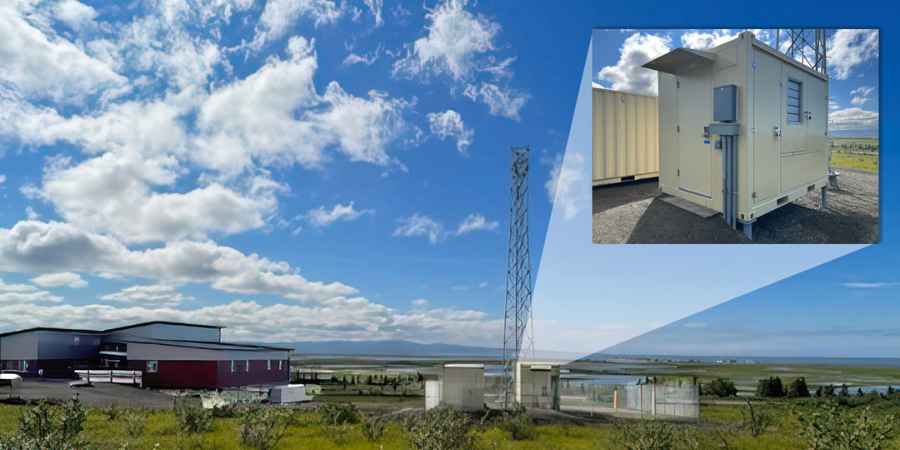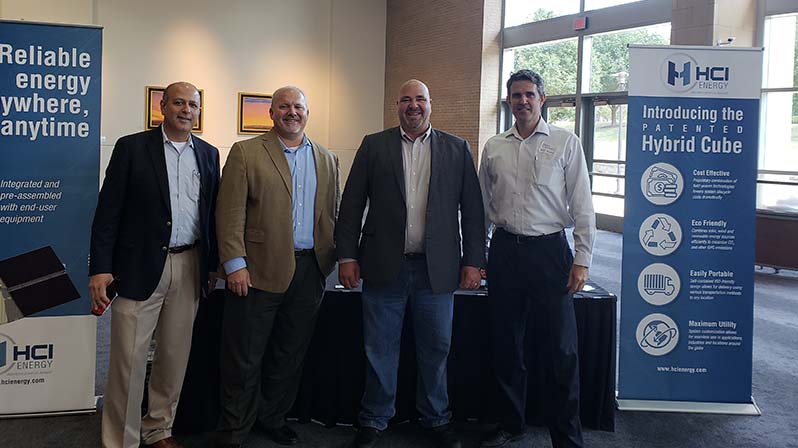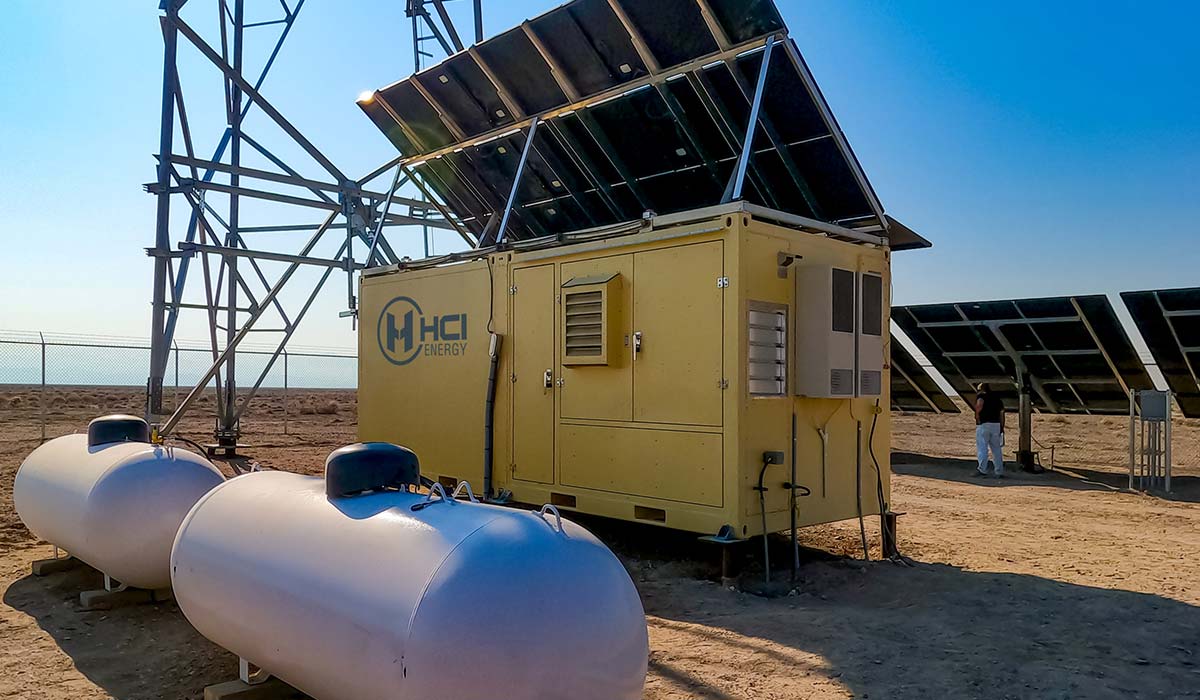200lb Dogs, Mobile Power Stations, and Mining Vehicles on US Border: Companies Rush to Cash In
SAN ANTONIO — A record-high number of companies that offer border security-related services and products descended on southern Texas this week in hopes of appealing to Homeland Security and Defense officials in town for the Border Security Expo.
Attendance at the 13th annual conference spiked more than 250 percent from last year’s 500 guests to 1,300 this go-around, even after the event was rescheduled from January due to the partial government shutdown. A government employee’s ticket was $124, and private sector employees paid between $1395 and $1495 to attend.
The spike in interest from vendors at the expo comes in the midst of the Trump administration’s fight to secure billions of dollars in additional funding for border security operations, including a fence and technology.
This year’s display had a larger variety of items and services for cops to consider, including a helicopter, guard dogs, and rapid DNA processors in addition to the surveillance cameras, motion detectors, barriers, and weapons systems normally on display.
Guard dogs at the U.S. border?
The dogs weigh as much as 200 pounds, more than double that of a German Shepherd. Company representatives said they will not physically assault a person unless first attacked.
The dogs would perform best if stationed between two barriers, like Border Patrol has in San Diego, Calif. There, they could run up and down the fenced area. They would live on the border 24/7. Professional-use Caucasian Shepherds start at $10,000 each.
“This isn’t a new concept — just new to us in America,” said Post, adding that the Louisiana prison system has begun using guard dogs outside its facilities.
Hybrid coal mining vehicles make debut
Tony Hamblin, product development manager at Tomcar, came to the expo this year to show agents an alternative to pick-up trucks and SUVs. The Phoenix company’s off-road vehicles are most popular in the mining industry, but Hamblin said they would be ideal on the border where agents often do not have roads to drive on or rely on unpaved ones.
“We haven’t typically gone after the American border security market, but we believe either car will work for them,” said Hamblin. “They’ve got a lot of ground clearance, suspension travel, and can carry as much weight as a pick-up.”
The vehicles can go up to 40 miles per hour in harsh terrain and won’t compromise cameras or antennas attached to them because the machine shakes much less than commercial vehicles.
Hamblin said Border Patrol agents and sheriffs based on the southern border he met with during the expo had already scheduled in-person demonstrations.
The cars on display for two-seat and four-seat models. They did not have glass windows, which Hamblin added would not prevent gunfire anyway.
“Through the years, there’s been instances where they’ve thrown rocks,” he said.
The vehicles can carry 1,000 to 3,000 pounds of equipment, including a water pump and generator. They run on diesel gasoline or electric, and run between $35,000 and $45,000.
Hamblin said the price is good compared to what Customs and Border Protection spends on Ford F-250 trucks, which run around $70,000.
Reliable power options for agents stationed in remote areas
HCI Energy provides turn-key energy packages that can power downed electrical lines or have telecommunications components built-in inside.
President Joe Heller said the intermodal containers are built to be shipped via freight, air, or truck, and can be delivered to virtually any place on the southern border where power is needed.
The 20-foot-long shipping container can come with a 50-foot-tall built-in wind turbine, solar panels, generator, and batteries depending on what a buyer needs to power.
The power station is climate-controlled and secure to keep anyone from breaking in.
Heller envisions them being used by CBP to charge drones on the container’s roof and to stretch cell phone and radio signal in remote areas where agents currently have no service.
“When your officer is out there, their radio communicates with that tower. They’ll do a man down. These towers have to be on, every single one of those towers as you drive by and see on the highway are on the grid,” said Tim Tierney, vice president of business development.
That grid’s unreliable, which is why you need a back-up generator and batteries,” Tierney said.
Boxes can facilitate five to 100 kilowatts of energy, and they cost between $150,000 and $400,000. One hundred kilowatts is enough to power three to five large homes, according to Heller.
“We have guys coming around here today saying, ‘Hey, I have areas I can’t get power to around the border, but if we put this out there, we now have communications,’” said Tierney.
From cell phone manufacturing to all-inclusive software suites
Motorola Solutions has evolved in recent years from a hardware-driven company to one focused on software solutions. In the last few years, the company has acquired a handful of software companies that are now part of its federal command center software suite.
Carlos Hernandez, a senior technical architect, said whereas other companies offer individual platforms for scheduling, sensor monitoring, weather conditions, Motorola Solutions had compiled some of those companies and created a single dashboard where all of the above can be reviewed at once.
Hernandez said another upside to the comprehensive program was that its components were all refit in order to work together. The Border Protect suite includes camera sensors, nuclear radiation sensors, storage, analytics, access control, ID management, keypads, alarms, GPS, and more.
The convergence platform is meant to streamline workflow for Border Patrol and CBP personnel.
“We’re trying to get them to test it — some Border Patrol and Office of Field Operations to pilot it, show the value,” said Hernandez. The Defense Department uses a similar version of Motorola’s product.
Share this
You May Also Like
These Related Stories

HCI Energy's Hybrid Power Shelter™ Maintains Broadband Service During Remnants of Alaska Typhoon Merbok

HCI Energy Engages MoKan Wireless Members about Supporting Small Cell and 5G Deployment




